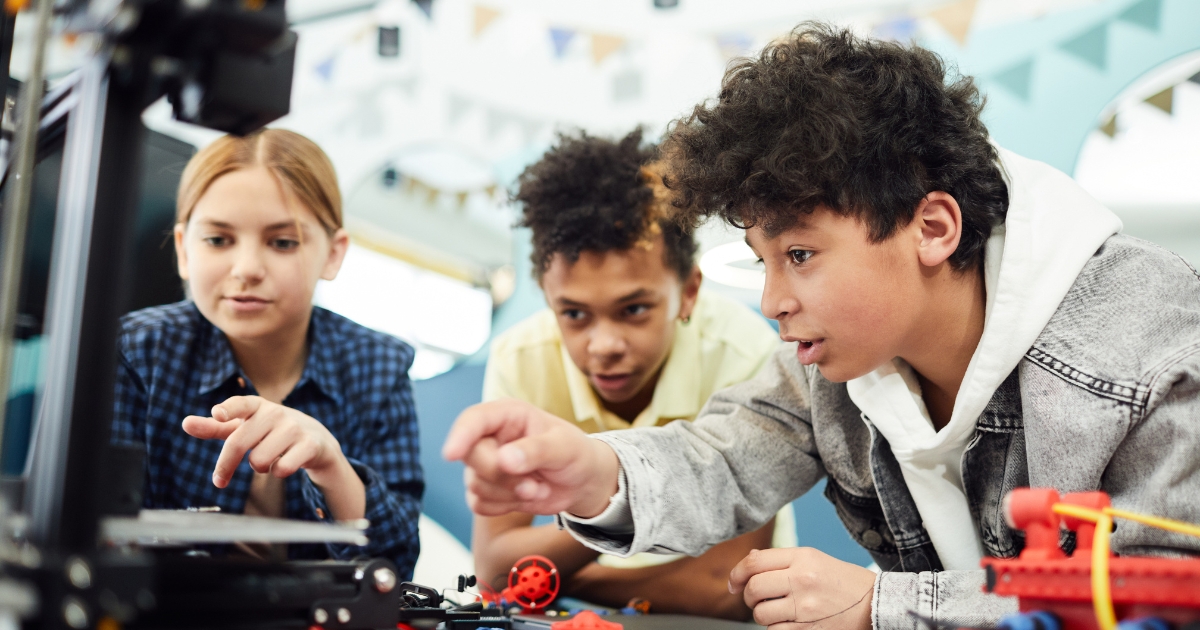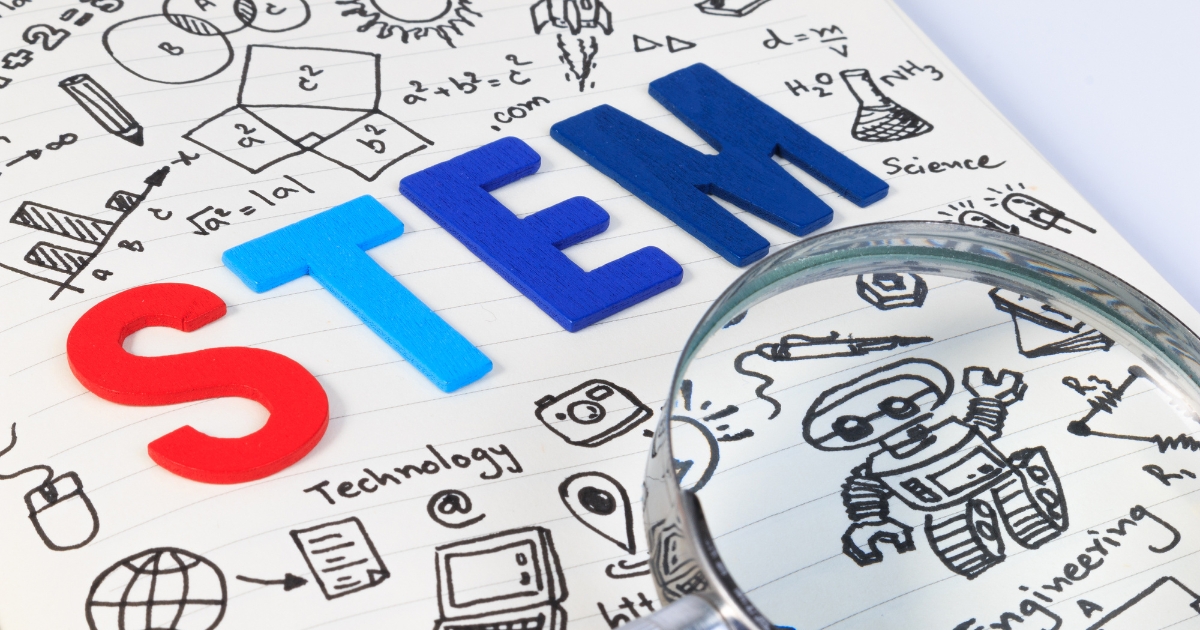One of the unique benefits of homeschooling is the ability to teach children of different ages together. This family-style learning creates a collaborative environment where older kids can mentor younger ones, and everyone learns from each other. However, finding activities that capture everyone’s interest and challenge them appropriately can be tricky, especially in subjects like science, technology, engineering, and math (STEM). The key is to select projects that are scalable and have multiple points of entry. This allows each child to participate at their own level while contributing to a common goal.
Successful mixed-age STEM activities are built on a foundation of exploration and open-ended questions. Instead of focusing on a single right answer, these projects encourage a process of discovery. A simple engineering challenge, for instance, can be approached differently by a 6-year-old and a 14-year-old. The younger child might focus on basic construction, while the older one can incorporate principles of physics and design constraints. This approach not only makes learning more dynamic but also mirrors how real-world scientific teams operate, with individuals of varying expertise coming together to solve a problem.
This guide is designed to provide you with practical, engaging STEM ideas for kids that work beautifully in a homeschool group setting. We will explore specific projects that are easily adaptable for a wide range of ages and skill levels. You will learn how to structure these activities to ensure every child feels involved and intellectually stimulated. From building simple machines to exploring the natural world, these projects will help you foster a lasting love for STEM in all your children.
The Foundation: Designing Scalable STEM Challenges
The secret to successful mixed-age STEM activities lies in their design. A great project is not one-size-fits-all but rather one-size-fits-many. It should have a low barrier to entry, allowing the youngest learners to participate meaningfully, while also offering layers of complexity to challenge older, more advanced students. The goal is to create a shared experience where collaboration is natural and every contribution is valued. This is achieved by focusing on open-ended problems rather than prescriptive instructions.
Instead of asking children to build a specific model car, challenge them to design a vehicle that can travel the farthest down a ramp. This single prompt invites a multitude of solutions, from a simple block with wheels to a more aerodynamic design with weighted axles.
To make a project truly scalable, consider the different roles children can take on. Younger children can be responsible for gathering materials, sorting components, or performing simple construction tasks. They might decorate the project or be the official “tester” who gets to try out the final creation. Meanwhile, older students can tackle the more complex aspects of the challenge. They can be the project managers, researchers, designers, or data analysts. They might be tasked with drawing blueprints, calculating measurements, researching scientific principles, or recording and interpreting the results of an experiment.
For example, in a “build a boat” challenge, a 5-year-old could test which materials float, a 9-year-old could design the boat’s shape, and a 13-year-old could calculate its buoyancy and cargo capacity. Each child is engaged at their own level, working towards a common objective.
Furthermore, the materials you choose play a crucial role in scalability. Using simple, everyday items like cardboard, tape, craft sticks, and recycled containers makes the activities accessible and less intimidating. These materials invite creativity and improvisation. Advanced students can still incorporate more sophisticated elements, like simple circuits with batteries and LEDs or basic coding with a beginner-friendly platform like Scratch to control a moving part.
The key is to provide a core set of simple materials for everyone and then offer optional “upgrade” materials for those who want to take the challenge further. This tiered approach ensures that you are not overwhelming your younger learners or boring your older ones. By thoughtfully designing the challenge, assigning age-appropriate roles, and providing a flexible set of materials, you can create engaging STEM projects for homeschool groups that inspire every child.

Engineering And Physics Fun For All Ages
Engineering projects are a fantastic avenue for mixed-age STEM activities because they are inherently hands-on and results-driven. Children can see the direct outcome of their designs and work together to improve them. These challenges teach critical thinking, problem-solving, and resilience. When a structure collapses or a machine fails, it is not a failure but an opportunity to analyze, redesign, and try again. This iterative process is at the heart of the engineering design cycle and is a valuable lesson for learners of all ages.
One of the most popular and adaptable projects is the classic egg drop challenge. The goal is simple: design and build a contraption that will protect a raw egg from a fall. The beauty of this project lies in its infinite scalability.
- Younger Students (Ages 4-7): Their focus can be on the concept of “cushioning.” Provide them with soft materials like cotton balls, foam, and bubble wrap. They can experiment with wrapping the egg and can help decorate the exterior of the container. Their role is primarily exploratory and sensory. They are learning about materials and their properties in a very tangible way.
- Middle Students (Ages 8-12): These students can move beyond simple cushioning and start thinking about shock absorption and distribution of force. Introduce concepts like parachutes, wings for slowing descent, and crumple zones. They can be tasked with sketching a design before building. They can also be responsible for measuring the drop height and recording which designs were successful.
- Older Students (Ages 13+): Challenge them with more advanced constraints. For example, they must build their device using a limited set of materials (e.g., only straws and tape) or adhere to a budget, assigning a cost to each material. They can calculate the potential energy of the egg before the drop and analyze the physics behind why certain designs succeeded or failed. They could even create a presentation to explain their design principles to the rest of the group.
Another excellent project is building a Rube Goldberg machine. This is a complex contraption designed to perform a simple task in an overly complicated way. This project is perfect for a group because it can be broken down into smaller sections, with each child or pair of children responsible for one part of the chain reaction.
- Group Planning: Start by defining the simple task the machine will accomplish, like ringing a bell or turning on a light. Brainstorm as a group all the steps the machine could take to get there.
- Individual Sections: A younger child might be in charge of setting up a line of dominoes or a simple ramp for a marble. An older child could build a more complex component, like a lever system, a pulley that lifts an object, or even a simple electrical circuit that triggers the next step.
- Integration: The real challenge and fun come from linking all the individual sections together. This requires communication, collaboration, and a lot of trial and error. The group must work together to adjust timings, angles, and forces to ensure a smooth transition from one step to the next.
These engineering challenges provide a dynamic learning environment. They naturally encourage teamwork, with older children often stepping into a mentorship role to help younger siblings with the construction. The shared goal and the visible, often dramatic, results make for a memorable and effective learning experience that solidifies complex physics concepts in a practical, hands-on way.
Exploring The Natural World: Biology And Earth Science
The world around us is a living laboratory, making biology and earth science perfect subjects for mixed-age exploration. These projects often require observation over time, teaching patience and data collection skills. They connect children to their environment and provide a tangible context for understanding complex life cycles and ecosystems. Best of all, many of these activities require minimal setup and use the resources available right in your backyard or a nearby park.
These hands-on explorations help foster a sense of wonder and stewardship for the natural world, turning a simple walk into a scientific expedition. The key is to frame the activity with guiding questions that encourage curiosity at all levels.
One of the most engaging long-term projects is creating a backyard habitat or a simple container garden. This project can be as simple or as complex as you want to make it, perfectly accommodating a wide range of ages. The shared goal is to cultivate life and observe it grow. Younger children can be deeply involved in the physical tasks; they love digging in the dirt, planting seeds, and watering the plants.
These tasks help develop their fine motor skills and give them a sense of ownership and responsibility. They can observe the daily changes, noticing when the first sprout appears or when a ladybug visits a leaf. Their role is one of a naturalist and caretaker, learning the basic needs of living things.
Older students can take on the role of project scientist and manager. Before planting, they can research which native plants will best attract local pollinators like bees and butterflies, turning the project into an ecological study. They can be responsible for testing the soil’s pH level and amending it as needed. As the garden grows, they can keep a detailed nature journal, sketching the plants at various stages of growth, identifying any insects that visit, and researching their role in the ecosystem.
They could create a chart to track plant growth, rainfall, and sunlight exposure, introducing them to data collection and analysis. This allows them to apply scientific methodology to a real-world system, understanding the interconnectedness of soil, water, sun, plants, and animals. The garden becomes a microcosm of a larger ecosystem, providing endless opportunities for deeper learning about botany, entomology, and environmental science.
Tech And Coding Without The Conflict
Introducing technology and coding to a mixed-age group might seem daunting. The perceived gap in technical skills between a first-grader and a middle-schooler can feel vast. However, many modern tools are designed specifically to bridge this gap. The focus should be on creativity, logic, and storytelling rather than on complex syntax. By choosing the right platforms and projects, you can create a collaborative digital environment where everyone can contribute. These activities demystify technology and empower children to become creators, not just consumers, of digital media.
One of the best entry points is stop-motion animation. It combines physical art with digital technology and is incredibly scalable. The concept is simple: take a photo of an object, move it slightly, take another photo, and repeat. When the photos are played in sequence, the object appears to move on its own.
- Younger Students (Ages 4-7): They can be the “makers” and “movers.” Their job is to create the characters and sets out of clay, LEGOs, or drawings. During filming, they can be responsible for moving the characters in small increments between shots. This tactile involvement keeps them engaged and gives them a clear role.
- Middle Students (Ages 8-12): These students can take on the role of storyboard artist and director. They can plan out the story’s plot, sketch the sequence of scenes, and direct the younger children on how to move the characters to match the story. They can also be in charge of the camera, learning about angles and framing.
- Older Students (Ages 13+): They can be the post-production crew. Using simple, often free stop-motion apps on a tablet or phone, they can import the photos, adjust the timing and frame rate, and add sound effects, music, and title cards. They can explore more advanced editing techniques, turning the raw photos into a polished final movie.
Another excellent area is introductory coding with block-based languages like Scratch or ScratchJr. These platforms use interlocking visual blocks instead of written code, making programming concepts accessible to pre-readers.
- ScratchJr (Ages 5-7): Designed for younger kids, this app allows them to snap together blocks to make characters move, jump, dance, and sing. They can create simple animations and interactive stories, learning the fundamentals of sequencing and events.
- Scratch (Ages 8+): This more powerful platform allows for the creation of complex games, animations, and interactive art. In a mixed-age setting, you can create a project together. For instance, design a simple game. A younger child could draw the characters and backgrounds using the platform’s paint editor. An older child can then write the code that makes the character run and jump when the arrow keys are pressed, or what happens when the player reaches a goal.
In these tech-based projects, everyone works together to create a single, shared product—a movie or a game. It shifts the focus from individual screen time to collaborative creation. The older kids naturally mentor the younger ones, explaining how the code works or how to achieve a certain animation effect. This process reinforces their own understanding while building the confidence of their younger siblings, proving that mixed-age STEM activities can thrive in the digital world too.
Creating A Dynamic Environment
Engaging STEM projects for mixed-age student groups not only foster collaboration and creativity but also create a dynamic learning environment where students of all ages can thrive. By embracing diverse perspectives and skill levels, these projects encourage teamwork, critical thinking, and a shared passion for discovery. Whether it’s building a robot, designing a sustainable city, or exploring the wonders of coding, these activities inspire students to learn from one another and grow together. So, let’s continue to innovate and empower the next generation of problem-solvers—because in STEM, the possibilities are truly endless.”



